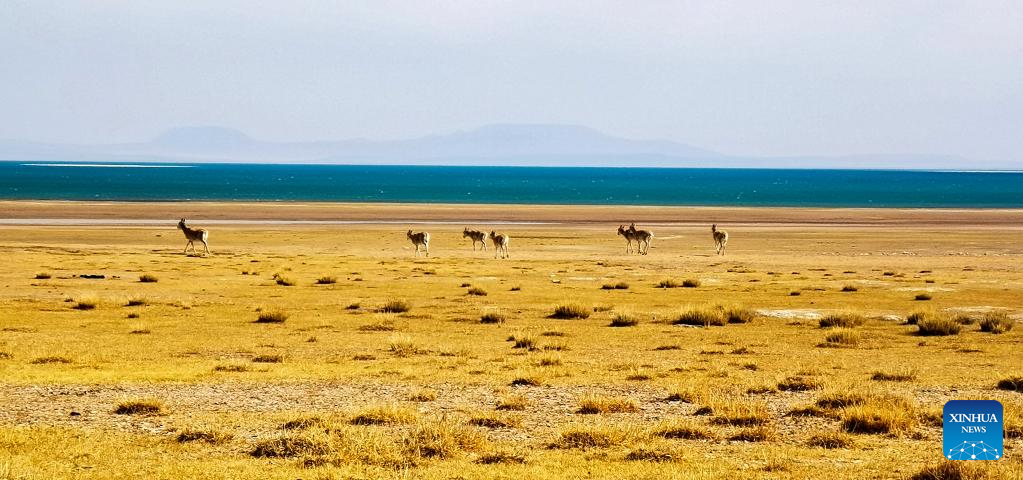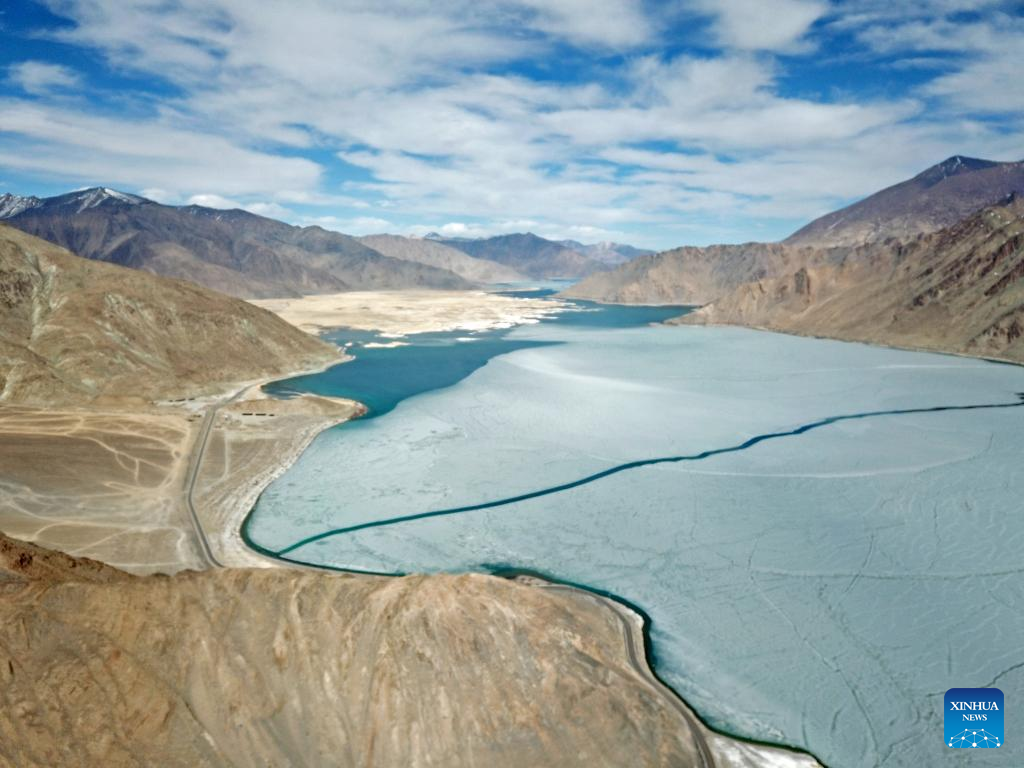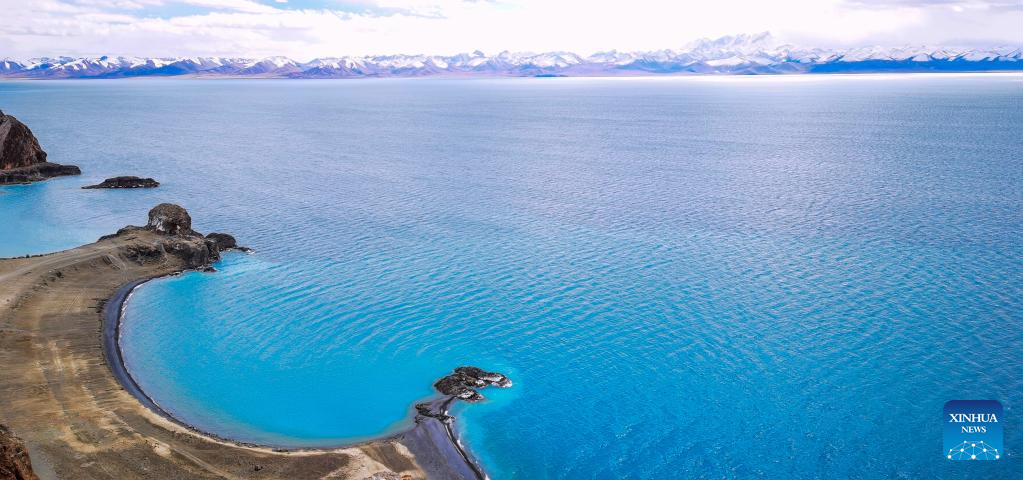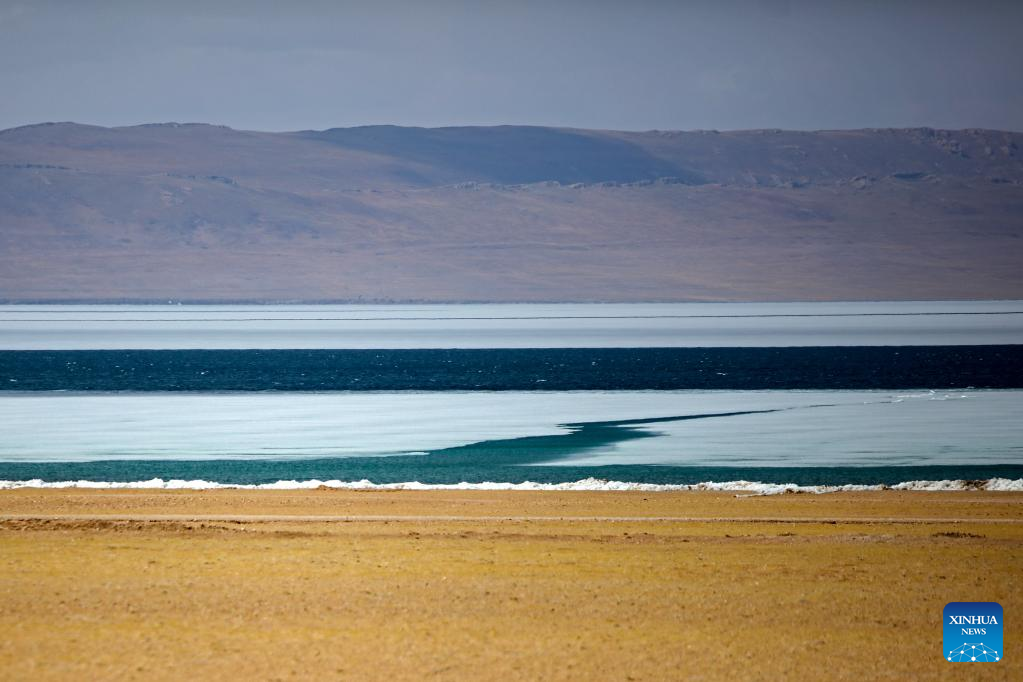Tibet prioritizes ecological protection in development
 0 Comment(s)
0 Comment(s) Print
Print E-mail Xinhua, April 22, 2022
E-mail Xinhua, April 22, 2022

Photo taken with a mobile phone shows a lake in Ge'gyai County, southwest China's Tibet Autonomous Region, April 12, 2022.
Known as "the roof of the world," southwest China's Tibet Autonomous Region is deemed the "water tower" of Asia, a climate regulator and gene pool of the planet Earth. The regional government has prioritized the building of ecological civilization in Tibet's development. (Xinhua/Shen Hongbing)

Photo taken with a mobile phone shows a herd of horses running near Baiku Lake in Nyalam County of Xigaze, southwest China's Tibet Autonomous Region, May 14, 2021.
Known as "the roof of the world," southwest China's Tibet Autonomous Region is deemed the "water tower" of Asia, a climate regulator and gene pool of the planet Earth. The regional government has prioritized the building of ecological civilization in Tibet's development. (Xinhua/Shen Hongbing)

Photo taken with a mobile phone shows a herd of Tibetan gazelles near Serling Tso Lake in Nagqu, southwest China's Tibet Autonomous Region, April 13, 2022.
Known as "the roof of the world," southwest China's Tibet Autonomous Region is deemed the "water tower" of Asia, a climate regulator and gene pool of the planet Earth. The regional government has prioritized the building of ecological civilization in Tibet's development. (Xinhua/Shen Hongbing)

Photo taken with a mobile phone shows the Banggong Lake in Ngari, southwest China's Tibet Autonomous Region, April 8, 2022.
Known as "the roof of the world," southwest China's Tibet Autonomous Region is deemed the "water tower" of Asia, a climate regulator and gene pool of the planet Earth. The regional government has prioritized the building of ecological civilization in Tibet's development. (Xinhua/Shen Hongbing)

Aerial photo taken on April 5, 2022 shows the Banggong Lake in Ngari, southwest China's Tibet Autonomous Region.
Known as "the roof of the world," southwest China's Tibet Autonomous Region is deemed the "water tower" of Asia, a climate regulator and gene pool of the planet Earth. The regional government has prioritized the building of ecological civilization in Tibet's development. (Xinhua/Jiang Fan)

Photo taken on April 13, 2022 shows Serling Lake in Nagqu, southwest China's Tibet Autonomous Region.
Known as "the roof of the world," southwest China's Tibet Autonomous Region is deemed the "water tower" of Asia, a climate regulator and gene pool of the planet Earth. The regional government has prioritized the building of ecological civilization in Tibet's development. (Xinhua/Jiang Fan)

Photo taken with a mobile phone shows the scenery of Lake Namtso in Baingoin County, southwest China's Tibet Autonomous Region, Nov. 20, 2021.
Known as "the roof of the world," southwest China's Tibet Autonomous Region is deemed the "water tower" of Asia, a climate regulator and gene pool of the planet Earth. The regional government has prioritized the building of ecological civilization in Tibet's development. (Xinhua/Shen Hongbing)

Aerial photo taken on April 16, 2022 shows the scenery of the Yamzbog Yumco Lake in Shannan, southwest China's Tibet Autonomous Region.
Known as "the roof of the world," southwest China's Tibet Autonomous Region is deemed the "water tower" of Asia, a climate regulator and gene pool of the planet Earth. The regional government has prioritized the building of ecological civilization in Tibet's development. (Xinhua/Jiang Fan)

Photo taken on April 13, 2022 shows the scenery of Qagoi Lake in Nagqu, southwest China's Tibet Autonomous Region.
Known as "the roof of the world," southwest China's Tibet Autonomous Region is deemed the "water tower" of Asia, a climate regulator and gene pool of the planet Earth. The regional government has prioritized the building of ecological civilization in Tibet's development. (Xinhua/Jiang Fan)


